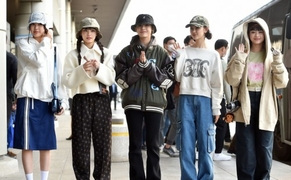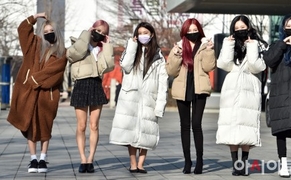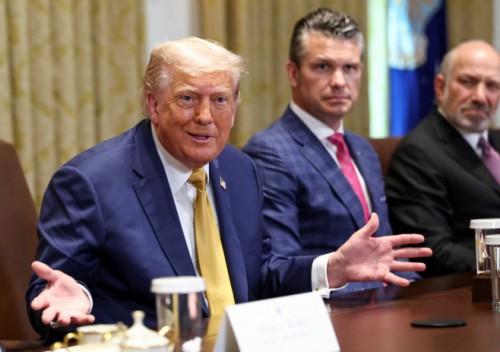 |
| U.S. President Donald Trump speaks during a Cabinet meeting at the White House on July 8. / Reuters-Yonhap |
U.S. President Donald Trump on July 8 said wealthy South Korea must pay for the American troops stationed in the country, reviving pressure on Seoul to shoulder the full burden of the cost of U.S. Forces Korea (USFK).
His remarks are interpreted as a call for South Korea to cover the entire cost of hosting U.S. troops, a sharp escalation from the current arrangement where Seoul pays roughly 50 percent of the annual defense cost-sharing.
Trump also reiterated that he would not extend the August 1 deadline for imposing reciprocal tariffs on 14 countries, including South Korea and Japan, rejecting any possibility of further delay.
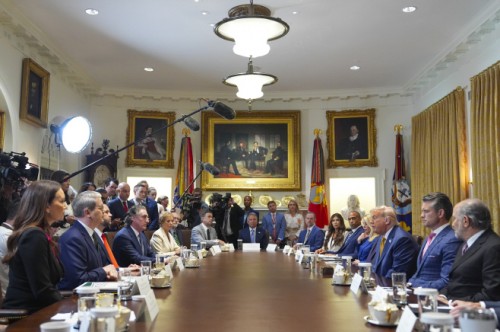 |
| Trump presides over a Cabinet meeting at the White House on July 8. / AP-Yonhap |
During a Cabinet meeting at the White House, Trump said, “South Korea is paying far too little for the military presence in their country.” He added, “They are making a lot of money and doing very well, but they should be paying for their military.”
Trump claimed that during his first term, he pressured Seoul into increasing its defense contributions, only to see the deal scrapped by President Joe Biden. He said, “I told South Korea, ‘We’re essentially giving you our military for free or for very little,’” and recounted demanding $10 billion a year in payments.
“I got $3 billion with just one phone call, and said we’d talk again the next year,” he added.
Asked whether countries would remain motivated to negotiate if the tariff deadline keeps being delayed, Trump replied, “Every time we issue a statement, they say I’ve changed it — but I haven’t. Come August 1, they all have to pay.”
Trump emphasized that he alone determines most of the tariff policies, saying, “Negotiations are largely decided by me. We don’t want to hurt them, and in most cases, the rates we choose are lower than what they impose on us.”
This contradicts the fact that South Korea imposes little to no tariffs on most U.S. imports under the existing free trade agreement. Trump appeared to defend his tariff methodology announced on April 2, in which a country’s reciprocal tariff rate is calculated by dividing the U.S. trade deficit with that country by total imports, then halving the result to determine the tariff percentage.
On his social media platform Truth Social, Trump reiterated on July 8, “In line with the letters sent to several countries yesterday — and to be sent today and tomorrow — tariffs will be imposed starting August 1, 2025. That means payments are due beginning August 1.”
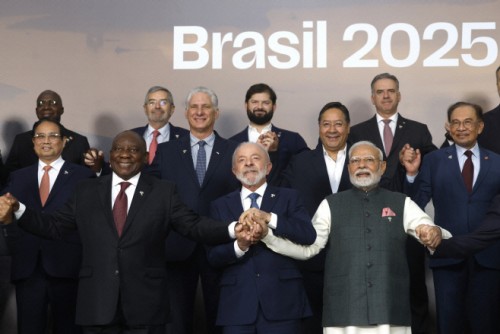 |
| Leaders attend the 17th BRICS Summit in Rio de Janeiro, Brazil, on July 7. From left: Vietnamese Prime Minister Pham Minh Chinh, South African President Cyril Ramaphosa, Brazilian President Luiz Inácio Lula da Silva, and Indian Prime Minister Narendra Modi. / EPA-Yonhap |
Trump also took aim at the BRICS group — which now includes 10 non-Western nations led by China and including Russia, India, Brazil, South Africa, Egypt, Ethiopia, Indonesia, Iran, and the UAE — accusing them of undermining the U.S. and the dollar.
“If they want to play games, that’s fine. I can play that game too,” he said. “BRICS member countries will face a 10% tariff.”
He had previously warned on Truth Social that all countries aligning with BRICS’ “anti-American” agenda would face a 10% additional tariff with no exceptions.
In response, Brazilian President Luiz Inácio Lula da Silva said at the 17th BRICS Summit in Rio de Janeiro, “The world has changed. We don’t want an emperor — we are sovereign nations.” Lula criticized Trump’s threats, saying, “It is irresponsible for a president to use the internet to intimidate the world. Any country hit by U.S. tariffs can respond with their own.”
Most Read
-
1
-
2
-
3
-
4
-
5
-
6
-
7



















